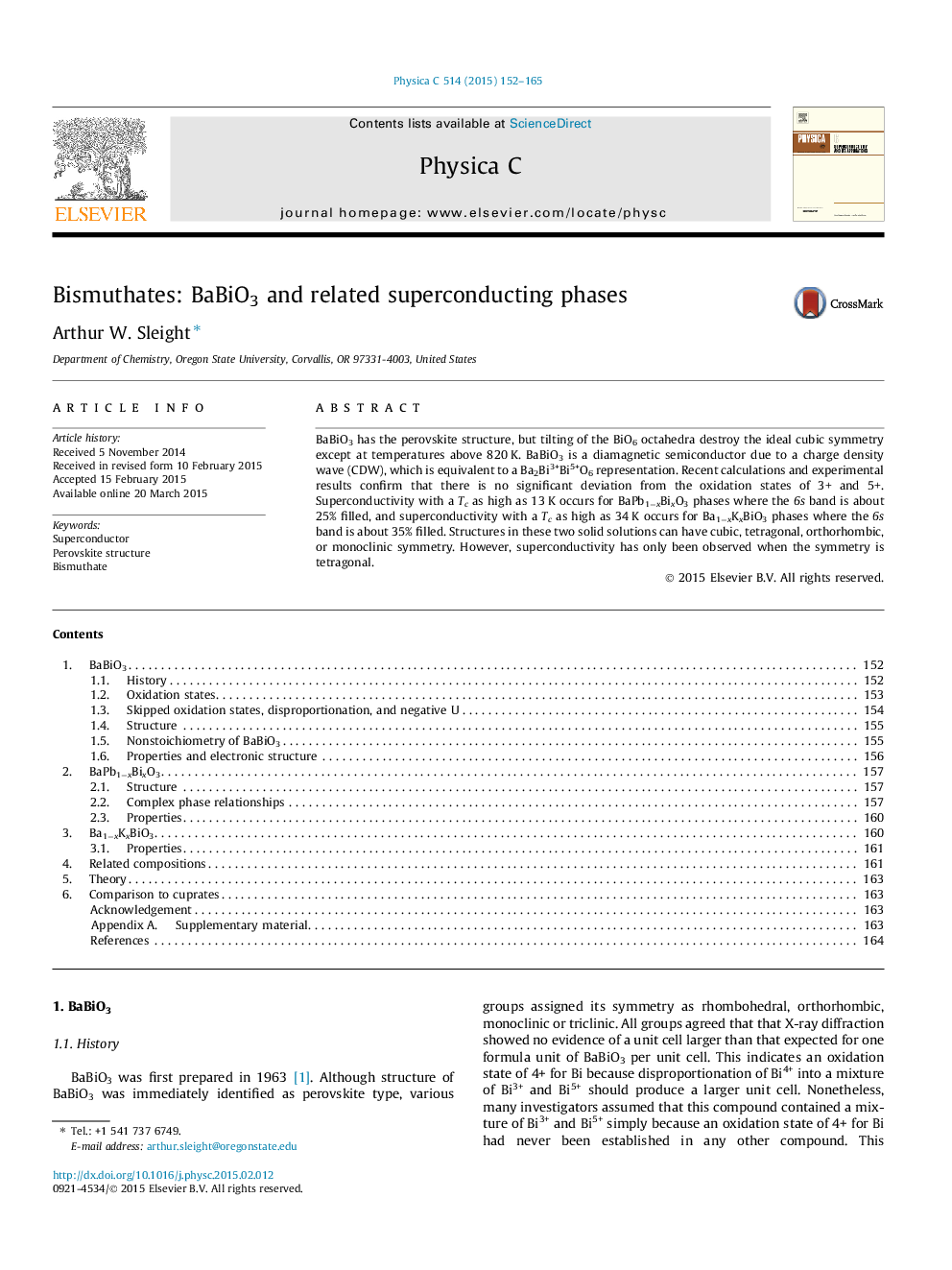| Article ID | Journal | Published Year | Pages | File Type |
|---|---|---|---|---|
| 1817555 | Physica C: Superconductivity and its Applications | 2015 | 14 Pages |
•BaBiO3 has the perovskite structure, but tilting of the BiO6 octahedra destroy the ideal cubic symmetry except at temperatures above 820 K. BaBiO3 is a diamagnetic semiconductor due to a CDW, which is equivalent to a Ba2Bi3+Bi5+O6 representation.•Recent calculations and experimental results confirm that there is no significant deviation from the oxidation states of 3+ and 5+.•Superconductivity with a Tc as high as 13 K occurs for BaPb1−xBixO3 phases where the 6s band is about 25% filled, and superconductivity with a Tc as high as 34 K occurs for Ba1−xKxBiO3 phases where the 6s band is about 35% filled.•These two solid solutions can have cubic, tetragonal, or orthorhombic symmetry.•However, superconductivity has only been observed when the symmetry is tetragonal.
BaBiO3 has the perovskite structure, but tilting of the BiO6 octahedra destroy the ideal cubic symmetry except at temperatures above 820 K. BaBiO3 is a diamagnetic semiconductor due to a charge density wave (CDW), which is equivalent to a Ba2Bi3+Bi5+O6 representation. Recent calculations and experimental results confirm that there is no significant deviation from the oxidation states of 3+ and 5+. Superconductivity with a Tc as high as 13 K occurs for BaPb1−xBixO3 phases where the 6s band is about 25% filled, and superconductivity with a Tc as high as 34 K occurs for Ba1−xKxBiO3 phases where the 6s band is about 35% filled. Structures in these two solid solutions can have cubic, tetragonal, orthorhombic, or monoclinic symmetry. However, superconductivity has only been observed when the symmetry is tetragonal.
